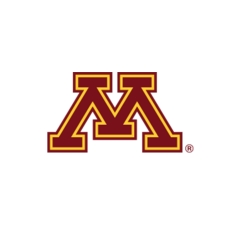

202 Morrill Hall 100 Church Street SE
Minneapolis, MN 55455
United States
Certificates / Diplomas
Bachelor's Degree
Graduate (Certificates and Degrees)
Cost
Living On-Campus
36,498
Living Off-Campus
37,846
Living with Family
28,026
Average Net Price
$16,730 / year
This is the average annual amount that first-time, full-time undergraduate students pay at this institution after subtracting all grants and scholarships from the cost of attendance.
Show Net Price details
Net cost after grants and scholarships by income
$0-$30,000:
$7,262
$30,001-$48,000:
$7,634
$48,001-$75,000:
$10,861
$75,001-$110,000:
$17,909
Over $110,000:
$26,623
This net price data shows the average amount students have paid, according to their family income, after subtracting all grants and scholarships.
College Profile
Student/Faculty Ratio
16:1
Size of Student Body
55,632
Average Class Size
30
Graduate Students Enrolled
16,339
Show Undergraduate Student Body details
Breakdown by Race
Black or African American:
9%
Hispanic:
6%
Asian:
13%
White:
59%
Two or more races:
5%
International Students:
6%
Unknown:
3%
Breakdown by Age
19 and Younger:
42%
20 to 24:
52%
25 to 34:
4%
35 to 44:
1%
45 and Older:
2%
Breakdown by Gender
Men:
46%
Women:
54%
New entering students who are transfers
19%
Student Success
Graduation Rate for Four-Year Programs
85%
Show Graduation Rate 4-yr Institution details
Completers within 6 years by race
American Indian or Alaska Native:
67%
Black or African American:
78%
Hispanic:
83%
Asian:
83%
Native Hawaiian or Other Pacific Islander:
100%
White:
86%
Two or more races:
84%
Unknown:
81%
Completers within 6 years by gender
Men:
83%
Women:
86%
Show Retention Rate details
Retention Rate By Type
Full-time:
91%
Part-time:
69%
Campus Settings
Financial Aid
Average amount of federal, state, local, institutional or other sources of grant aid awarded to undergraduate students
$10,416
The following information pertains to first-time full-time undergraduate students.
Show Financial Aid details
Average amount of aid awarded to full-time first-time undergraduates
State/Local grant aid:
$6,312
Institutional grant aid:
$6,553
Federal grant aid:
$5,511
Average amount of grant aid awarded by income (all sources)
$0-$30,000:
$20,513
$30,001-$48,000:
$20,414
$48,001-$75,000:
$16,596
$75,001-$110,000:
$9,066
Over $110,000:
$2,213
Financial Aid Contact
Cumulative Debt
This section shows the median debt graduates incurred to complete their degree at this institution.
Median Cumulative Debt by Degree Type
- Bachelor's Degree: $21,276
- First Professional Degree: $161,629
- Graduate Certificate: $43,556
- Master's Degree: $49,582
- Doctorate: $34,635
Percent of Graduates With Loans
- Bachelor's Degree: 49%
- First Professional Degree: 76%
- Graduate Certificate: 31%
- Master's Degree: 42%
- Doctorate: 15%
Admission Information
Application Fee
$55
- Common applications (online)
- The University of Minnesota Twin Cities is test optional through fall 2027 enrollment.
- High School Diploma or GED
- Transcripts
- Accepts dual credits
- Accepts exam-based credits
- Institution awards credits for military training
Application Timelines
Financial Aid Application Deadline
Visit admissions.tc.umn.edu for deadline information
Regular Decision Deadline
January 1
Early Action Deadline
Early Action 1 - Nov 1 Early Action II - Dec 1
Admissions Contact
Graduate Employment Outcomes
The data displayed below comes from the Graduate Employment Outcomes tool and only reports on graduates employed in Minnesota. This section shows employment data for graduate class of 2020, including percent of graduates with full-time employment in the 3rd year after college graduation and the median annual wages by award level, according to the Minnesota unemployment insurance records. Data does not include federal employees, self-employed (e.g. professional freelancers, artists, developers, designers, business owners), military, or individuals who moved out of state for a job. The list below may be incomplete and limited to some majors. Additionally, data has been suppressed when it refers to 10 or less students.Jump to:
This profile features institution-wide data. Be aware that some categories may not be showing and that data is suppressed when reporting is for 10 or less students. Most data and terminology is sourced from IPEDS. To learn more about each section, please refer to Data Sources.
The College Search Tool provides information and reported data for postsecondary institutions in Minnesota that receive federal and state financial aid. For licensed occupational training providers in Minnesota, please visit OHE's Licensed Career Schools.
